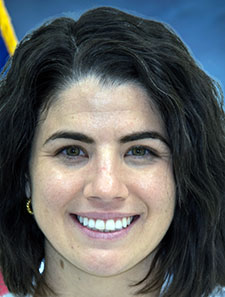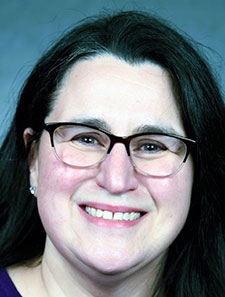What is a curriculum vitae (CV) and why is it important? Much like a firm handshake, your CV serves as your initial introduction. It’s often the first document potential employers review, making it crucial for opening doors to in-person or virtual opportunities. Unlike résumés, which are concise and tailored to specific roles, CVs offer a comprehensive overview of your academic journey, including research, publications, presentations, and other scholarly pursuits. Keeping your CV current is vital, not just for potential career shifts, but also for seizing internal growth prospects within your organization, such as leadership roles in various divisions or departments. Moreover, it positions you for broader opportunities on a national scale, such as committee memberships or leadership positions, underscoring the importance of maintaining a current and reflective CV. A meticulously curated CV not only recounts your career path thus far but also hints at future achievements and highlights what you bring to the table as an applicant for any organization.
CV formatting
The goal of a CV is to encapsulate a person’s educational journey, professional experiences, acquired skills, and notable achievements. While we’ll provide a general overview of a typical CV format, it is important to note that various institutions, particularly academic institutions, may have their own prescribed templates or formatting guidelines, particularly for current employees. These internal standards should take precedence over any formatting suggestions offered here, ensuring alignment with organizational protocols and expectations. Using the QR code or the link in the reference here, please find a general example of a standard academic CV template.1
Preparing a CV requires strategic organization and attention to detail. It’s far easier to record details proactively than to recall past activities later. Establishing a routine is beneficial. Consider scheduling a regular time in your calendar with reminders to update your CV, ideally monthly, but at the very least quarterly. One effective strategy for keeping your CV current includes creating an email folder dedicated to pertinent details of activities or awards, ensuring easy reference when updating your CV. Alternatively, consider using a phone note or document to quickly jot down accomplishments as they occur. Finally, keep your CV readily accessible, such as on cloud storage, ensuring your CV remains secure and available for quick updates. This consistent approach ensures that your CV remains a comprehensive reflection of your professional journey, ready to impress at any moment.
Often, the most recent experiences are listed first, providing a reverse chronological snapshot of your career progression, although this can vary and the key is keeping consistency in chronological order throughout the CV. Recognizing that applicant reviewers often sift through numerous CVs, it’s crucial to omit trivial details or activities with limited time commitments. Instead, focus on highlighting substantial contributions and impactful endeavors. While a CV should offer sufficient depth about your experiences, it should also maintain conciseness. Rather than paragraphs of information, opt for concise descriptions, especially for significant activities like large research projects or grants. Using bullet points can facilitate quick comprehension, aiding reviewers in swiftly navigating your CV.
When it comes to style, simplicity reigns supreme. Employ a clean and consistent formatting style throughout the document to ensure easy skimming. Fonts like Arial or Times New Roman are commonly recommended, with headings possibly bolded for emphasis. Font size should be consistent throughout—size 12 is standard. Consistency in formatting throughout the CV, such as numbering, bullet points, and indentations, enhances readability. Dates should be listed uniformly for quick scanning when possible. To minimize formatting errors, convert your document to PDF format before submitting it to potential employers.
Furthermore, you ought to tailor your CV to the specific job you’re targeting. This may involve reordering sections to highlight relevant experiences. For instance, if applying for an academic position with a significant teaching component, prioritize sections detailing teaching and medical education experiences over clinical roles.2 Adapting your CV to align with the requirements and preferences of the desired position increases its relevance and enhances your chances of making a favorable impression on prospective employers.
Ensuring your application materials are free of grammatical or spelling errors is paramount. Flawed submissions can raise concerns for potential employers, signaling a lack of attention to detail or professionalism.3 Seeking feedback on your CV from diverse sources is invaluable. Consider involving a mentor, particularly someone experienced in reviewing applicants for roles similar to your interests. Reviews should encompass not only grammatical accuracy but also the length and balance of information provided.
Being able to articulate your involvement in activities listed on your CV is crucial. Whether it’s your role within a research team or the outcomes of a particular project, clarity and authenticity are key. Avoid embellishing your contributions, as this can be easily uncovered during interviews.
What to include with your CV
When preparing your job application, it’s worth considering including a cover letter. The objective of this letter is to showcase succinctly why you would be a valuable addition to the organization or a great fit for the team. Ideally, your cover letter should be concise and easily digestible, typically less than a single page when double-spaced. Begin by introducing yourself and articulating why you’re the right candidate for the position, highlighting notable strengths relevant to the prospective job. Additionally, this is an opportune moment to mention briefly any personal circumstances, such as spouse or family location, that may tie into your interest in the region or healthcare system. Expressing a commitment to a long-term career can also be advantageous, as many institutions prioritize candidates who demonstrate openness to extended tenures, given the resource-intensive nature of interviewing, onboarding, and orientation processes.
 If there have been significant gaps in your practice of medicine, take this opportunity to address them. Also highlight efforts you’ve undertaken to stay abreast of developments in the field, such as reading journals or participating in continuing medical education. In concluding your cover letter, convey enthusiasm for the opportunity and express hopefulness for further communication. Provide preferred contact information, such as your cellphone number and email address, for ease of communication.
If there have been significant gaps in your practice of medicine, take this opportunity to address them. Also highlight efforts you’ve undertaken to stay abreast of developments in the field, such as reading journals or participating in continuing medical education. In concluding your cover letter, convey enthusiasm for the opportunity and express hopefulness for further communication. Provide preferred contact information, such as your cellphone number and email address, for ease of communication.
Additionally, take the time to curate a potential list of references that can be provided should an employer request. You can consider including a list of references, ensuring the references are aware that they may be contacted and feel comfortable speaking about your strengths. However, exercise caution when listing references: avoid including current employers if reaching out to them could potentially lead to issues. While potential employers should ideally notify you before contacting references, it’s not always guaranteed, so it’s wise to proceed with discretion.
A prepared CV helps seize future opportunities
A CV serves as more than just a professional document; it’s your gateway to opportunities and a testament to your career journey. Acting as your initial introduction to potential employers, a well-crafted CV showcases your academic achievements and is essential for seizing local and national opportunities within your field. With the above strategies in mind, your application materials will stand out, setting the stage for success in your career endeavors.

Dr. Maldonado

Dr. Paletta-Hobbs
Dr. Maldonado is an academic hospitalist and associate course director for the internal medicine sub-internship with Baylor College of Medicine at the Michael E. DeBakey VA Medical Center in Houston, Texas. Dr. Paletta-Hobbs is an academic hospitalist, an associate professor of internal medicine, associate program director for the internal medicine residency program, and the hospitalist pathway director at Virginia Commonwealth University in Richmond, Va.
References
- University of Kentucky College of Medicine. Curriculum vitae suggested format. https://www.dropbox.com/scl/fi/qblkj8mr086o5ssak9xr9/CV-Template.pdf?rlkey=6icjt9hb5awvp1dtssu0etxi0&dl=0. Accessed October 1, 2024.
- Allen-Dicker J, et al. Top qualifications hospitalist leaders seek in candidates: results from a national survey. J Hosp Med. 2019;14(12):754–757.
- Harolds JA. Tips for a physician in getting the right job, part II. Clin Nucl Med, 2013;38 (9):721-723. doi: 10.1097/RLU.0b013e31829ddfd6.